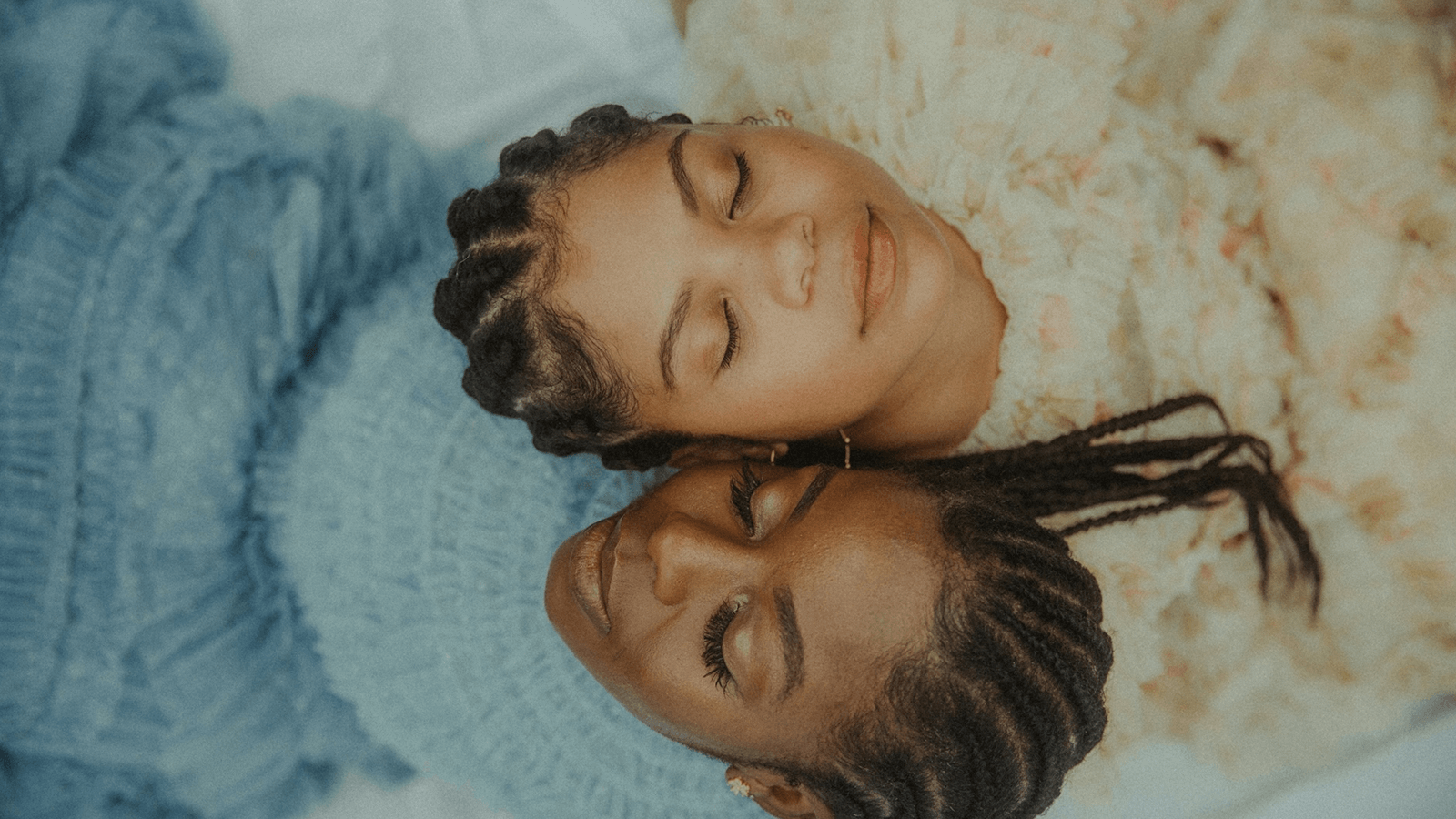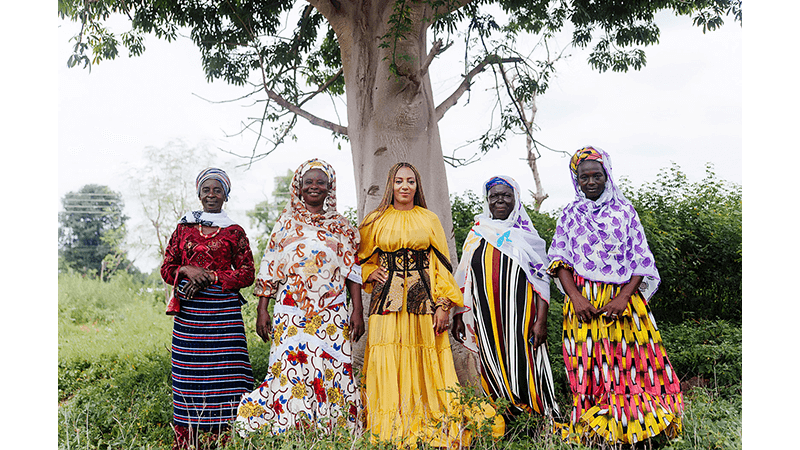Why It’s Time To Recognise & Celebrate The Legacy & Influence Of Black Beauty Trends
We know all about K-Beauty skincare routines and French girl hairstyles that seem to live in every ‘girly pops’ Pinterest board. But Black women – originators of many beauty trends that have broken the internet – are often left out of the conversation. Throughout history, many folks have dismissed, claimed ownership of, or flat-out overlooked the contributions of Black artists and entrepreneurs, particularly when it comes to beauty.
Cornrows, XXL nails, brown glossy lips and even gap-grills – all of these trends have not only dominated beauty but completely shifted it. They’re part of a larger cultural reset that’s expanded the boundaries of what’s considered fresh and cool, yet they aren’t always celebrated when experienced on a Black woman’s body. Often, there’s a rebrand: a name change, a new ‘whiter’ face to go with it and voilà – new trend alert!
“When Black beauty [trends] are copied or renamed, it shows that people don’t fully see the creativity of Black culture,” explains Laetitia Ky, artist and author of Love & Justice: A Journey Of Empowerment, Activism & Embracing Black Beauty. “It makes it harder for the beauty industry to really recognise our contribution. The beauty of these styles is lost when they are changed by others, and it feels like our culture is only accepted when it is not seen as Black.”
Beauty entrepreneur Sherrille Riley, founder of Beauty Edit Mayfair agrees, adding that: “The appropriation of Black beauty trends is done strategically to dim our creativity and to discredit us, as if we’re just consumers and we don’t bring anything to the table.”
So, in the spirit of embracing and celebrating our beauty heritage, let’s delve into the trends we love and wear today, all created by Black women.
1. Twist-Out Braids
Although TikTok has tried to co-opt them as ‘Mamma Mia braids’ (as seen on Amanda Seyfreid), twist-out braids have changed the narrative around natural texture – a pushback against long-standing beauty standards that idolise straight hair. They’re a go-to look for many Black women, using two-strand twists to create defined curls that show off the beauty of natural hair.
The style has made its way onto red carpets, runways and IG feeds, breaking away from the outdated idea that natural hair is only appropriate for certain spaces. Just look at actor and activist Yara Shahidi and singer Brandy – both known for sporting twist outs, whether on TV sets or video shoots – for inspiration.
2. Cornrows
No, they’re not ‘Bo Derek braids’, they’re cornrows, and they aren’t just a hairstyle – they’re an ancient art form. Dating back to over 3,000 BC in sub-saharan Africa, cornrows carry cultural and historical significance, symbolising everything from status to identity. Today, they’ve evolved into a cultural powerhouse that transcends beauty trends.
Celebrity hair stylist and brand founder Charlotte Mensah explains: “In Africa, intricate braiding patterns often signified one’s role within the community – styles were used to indicate age, tribe, marital status and social rank. Braiding was also a special, social experience, where people would bond and share conversations while crafting these detailed looks, which often took hours to complete.”
What once was labelled ‘too ethnic’ for mainstream fashion is now a style staple. Celebrities including Beyoncé, Zendaya and Rihanna have been instrumental in paving the way for younger generations to wear their braids without fear of judgment.
Take Zendaya’s response to E host Giuliana Rancic’s racially loaded comments criticising the actor’s choice to wear dreadlocks on the 2015 Oscars red carpet. Zendaya, then just 19, wrote on Instagram at the time: “…I was hit with ignorant slurs and pure disrespect… I don’t usually feel the need to respond to negative things but certain remarks cannot go unchecked.” In doing so, she sparked much-needed conversations about cultural appreciation and helped to change the ways in which Black hairstyles are spoken about in mainstream media.
3. Brown Lip Liner & Glossy Lips
People often reference heavy brown lip liner as a ’90s trend, as seen on the likes of the original Supers, the cast of Friends and more recently reclaimed by Hailey Bieber as ‘brownie glazed lips’. But IYKYK – paired with gloss, it’s the quintessential look that Black women everywhere were rocking long before any of this.
For Beyoncé’s former makeup artist, Sir John explains that it started as a way to get around a historical lack of representation for Black and Brown women in beauty products: “All you had was a lip liner and a clear gloss back in the day. We had to be creative and try things in an unorthodox way because of the lack of products for Black and Brown people,” he told Diet Prada.
Once dubbed as ‘ghetto’ when worn by women of colour, the look has evolved into a full-blown phenomenon across all beauty aisles for women of all demographics. Glossy brown lined lips feature in more than 80M posts on TikTok, from before and afters and how-to tutorials to the best products to achieve the juiciest and glossiest effect. Although this is a trend that was started by Black women, it does not discriminate on who can rock it.
4. XXL Nails
Let’s be real, Black women have been doing the most with nails since forever, long before nail art became the multi-billion-dollar industry it is today. Remember track sensation Florence ‘Flo-Jo’ Griffith Joyner – the fastest woman in the world – setting records while sporting technicolour dream XXL nails in the 1988 Olympics? Or how about Lil’ Kim’s money manicure from the Get Money music video, so good that it deserved a spot at the Museum of Modern Art in NYC?
The XXL nail trend was pioneered by Black women through the ’80s, ’90s and well into today – just look at the likes of Cardi B, Megan Thee Stallion and Saweetie – whose nail artist once reported spending eight hours creating a look for a magazine cover shoot.
For us, these aren’t just nails; they’re canvases for self-expression. “As a culture, we love colours, they’re a part of celebrating life and representing the vibrancy of our heritage,” says Riley. “In Caribbean culture, we have been known to do beautiful long, colourful nails, with lots of jewellery and nail piercings, so that women could express themselves. It was a big middle finger to Western society beauty standards.” She adds: “Historically, bold XXL nails were heavily criticised – named ‘ghetto fabulous’. Now, the fashion industry is taking heavy influence from Black culture and repackaging it to make it more palatable and mainstream.”
No wonder we’re seeing XXL nails everywhere, from the Kardashians to designer Marc Jacobs, and most high-street salons offering OTT nail art as standard.
5. Baby Hairs
Black women have been mastering the art of laying baby hairs for decades – we’re talking about those perfectly swooped edges that add a touch of softness to everything from updos to ponytails.
Originally, baby hairs were seen as an essential part of styling textured hair, but today, they’ve become a beauty statement of their own, with the likes of model Lori Harvey and musician Ella Mai taking the look to mainstream audiences. And make no mistake: those perfectly laid edges come straight from Black beauty culture.
“Even in baby hair, girls have many options of wearing them. They can be down on the forehead, while others wear them into their hairlines – which, for me, give a sophisticated approach to the look. We always take things from the past and make them modern.” says celebrity hairstylist Ted Gibson.
Black beauty is so much more than just style – it’s an expression of culture, identity, and pride. “We’re witnessing a renaissance!” adds Mensah. “Black hairstyles like cornrows, braids, twists, locs and Afros are everywhere, dominating the runways of London, Paris and Milan, and influencing popular culture. From football to basketball, some of the biggest stars are wearing these styles, and their fans are following suit.”
So next time you’re laying those edges, lining those lips, or flaunting those twist-outs, remember – you’re part of a legacy.
Sheilla Mamona is a freelance journalist with bylines at British Vogue, Marie Claire, GLAMOUR, amongst many other publications




